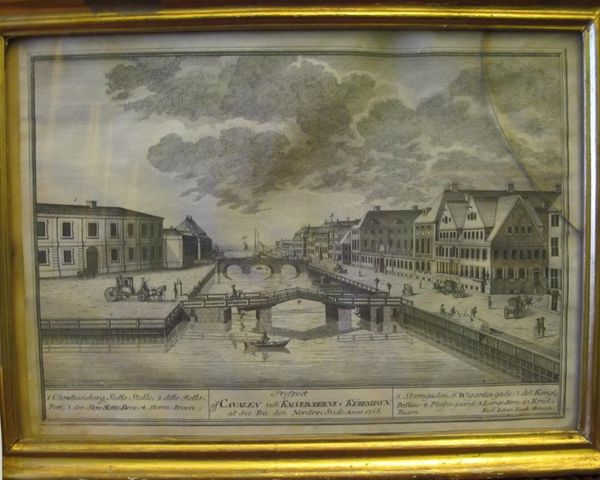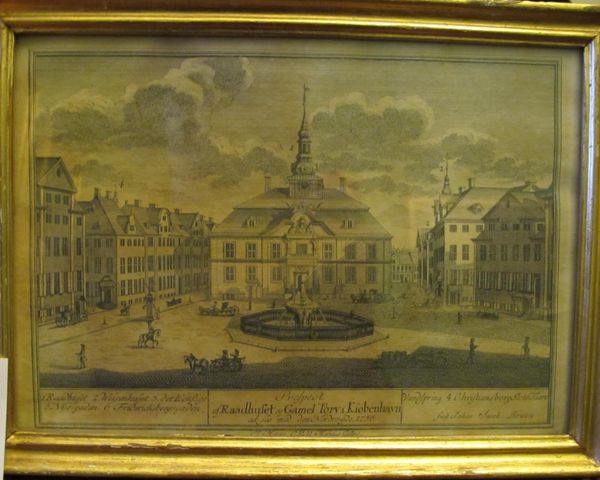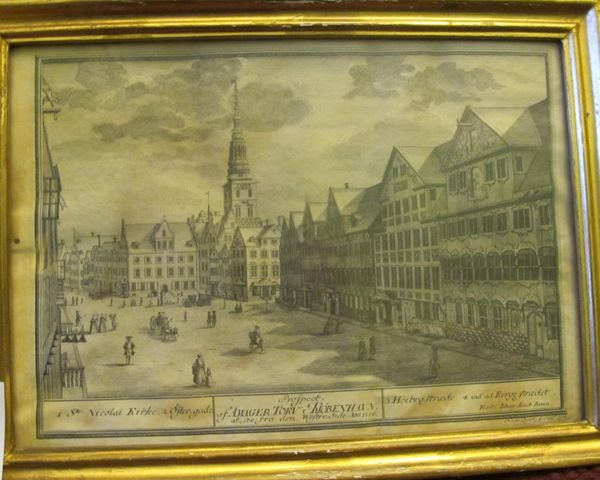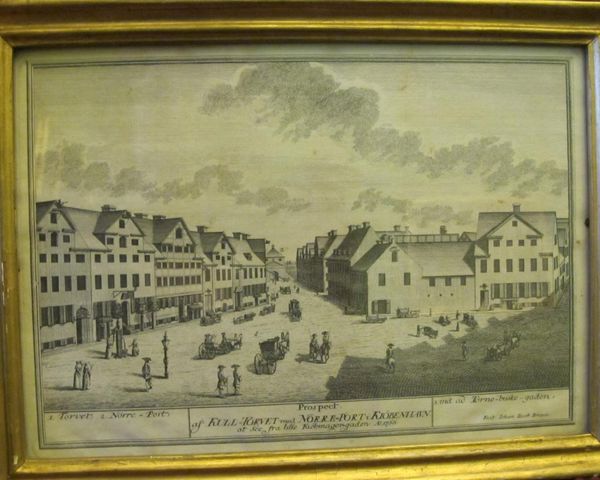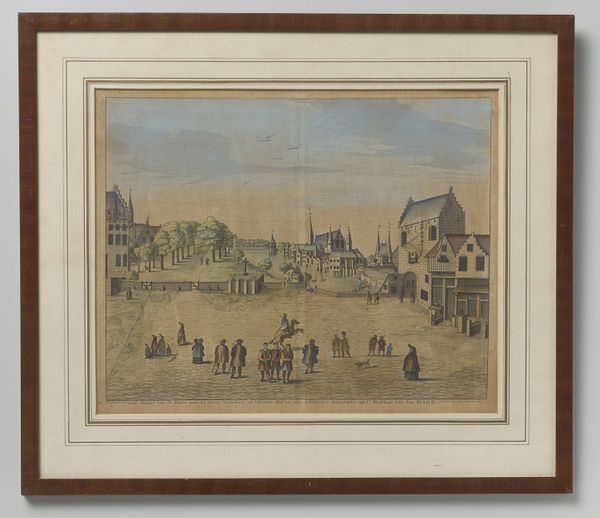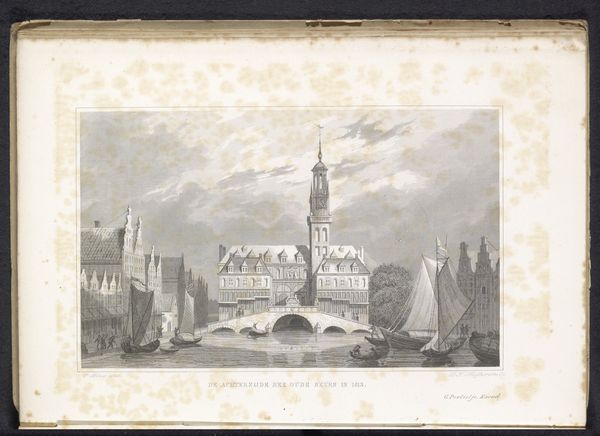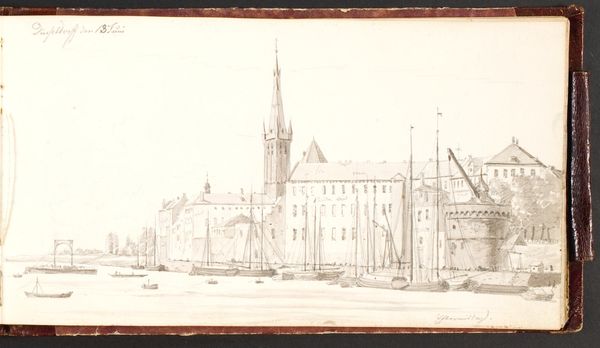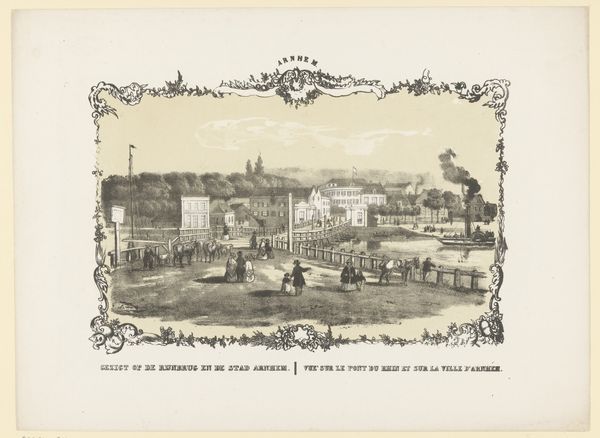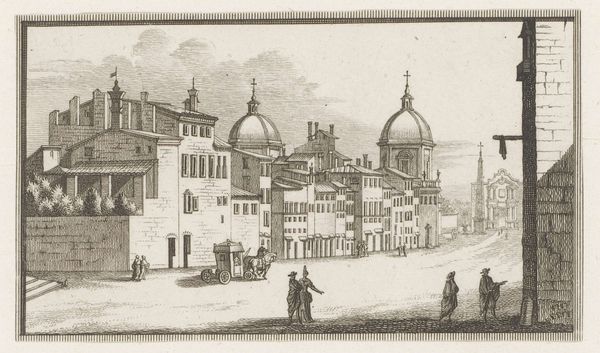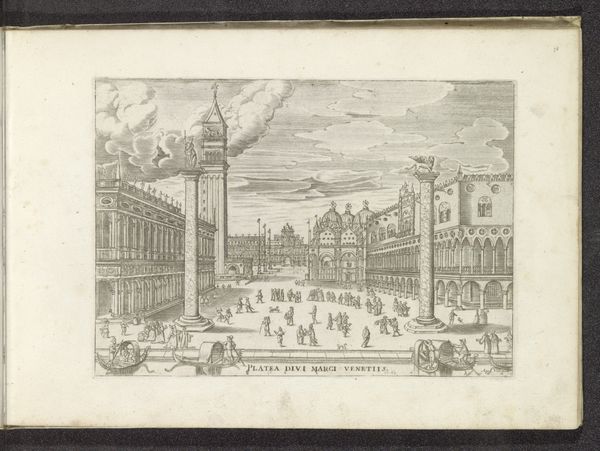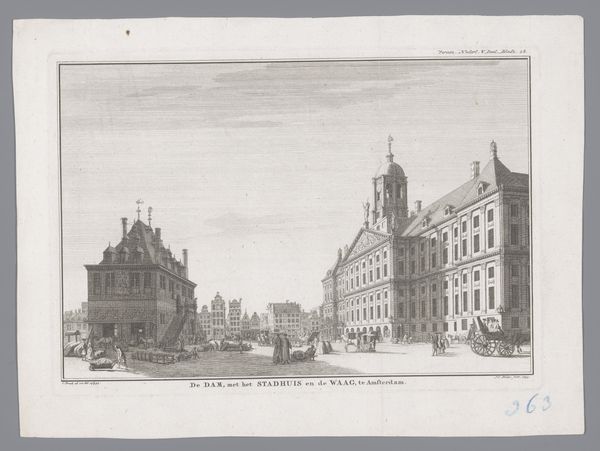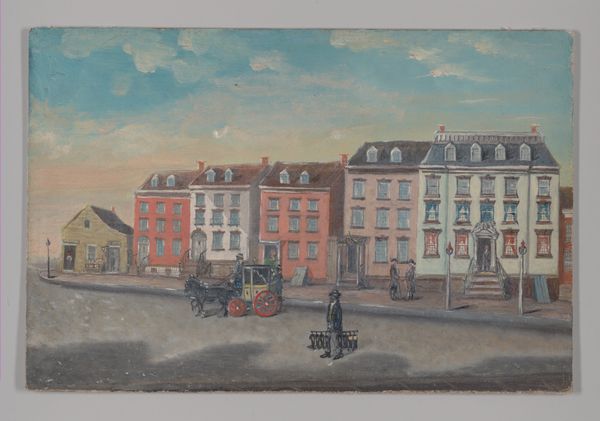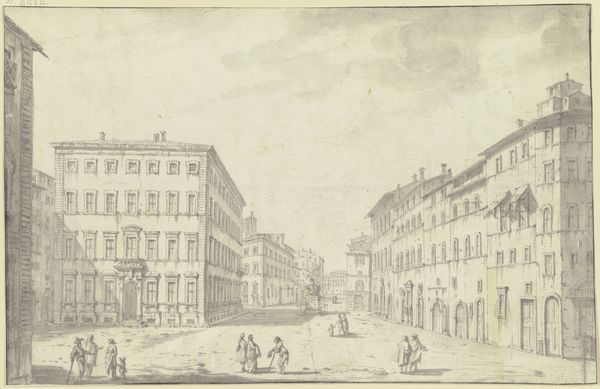
print, engraving
#
baroque
# print
#
landscape
#
cityscape
#
engraving
Dimensions: 215 mm (height) x 300 mm (width) (brutto)
Curator: Today we’re looking at Johan Jacob Bruun's 1755 engraving, "Kanalen op til Højbro i København," or, "The Canals up to Højbro in Copenhagen," which is currently held in the collection of the SMK, the National Gallery of Denmark. Editor: Immediately, I'm struck by the composition— the symmetry of the buildings flanking the canal. The cool monochrome tones lend a feeling of formality. I also notice how bustling the streets appear. Curator: Absolutely. As a cityscape, it invites consideration of the societal structures present at the time. Think about the people depicted in their various roles – merchants, laborers, nobility, all inhabiting the same visual plane. The canals themselves enabled trade. How did access to these routes determine economic and social standing? Editor: That's fascinating. I’m looking at how Bruun emphasizes the central church spire in the distance; its almost exaggerated height would have undoubtedly been a focal point for the population. There’s the implication of civic identity and even, I’d argue, spiritual authority. Curator: Good point! Religious institutions, after all, held immense power then. And who benefited from it? Who was marginalized? Think about the era, the Enlightenment bubbling in Europe. The architecture here stands as a visible record of hierarchies but also social tensions during a transitional period. Editor: Also the water itself becomes a potent symbol: commerce and movement of peoples, obviously. But it’s reflecting what? Not exactly truth. More of a constructed vision. I suspect there’s some amount of projection taking place here. Curator: Indeed. How images of a capital are circulated matters deeply, especially given historical exclusions from representation and civic engagement. It's also imperative to contextualize within Bruun's oeuvre—was he reinforcing or critiquing the dominant order through his landscape work? Editor: Ultimately, this print offers such rich points of entry precisely because these visuals provide glimpses into how values get built over time. Curator: Agreed. Thinking intersectionally invites us to unpack not only Bruun's vision, but also consider whose voices might be missing. Editor: Well said!
Comments
No comments
Be the first to comment and join the conversation on the ultimate creative platform.

